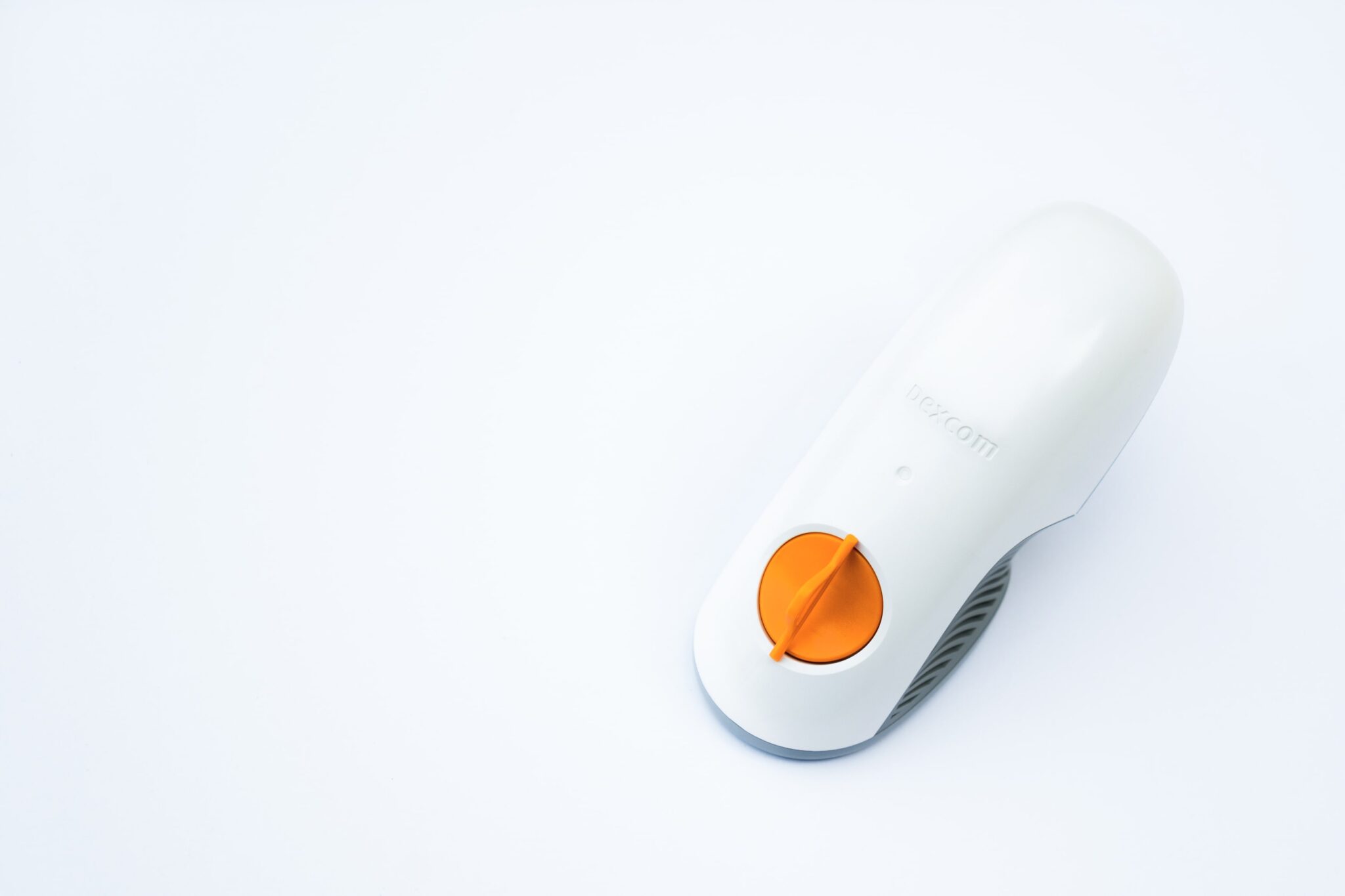
How Often Do You Change Dexcom G6 Transmitter
Posted on March 06, 2023 at 06AM
Are you tired of constantly changing your Dexcom G6 transmitter? Or do you need to figure out how often you should change it? Look no further! In this blog post, we will be discussing everything you need to know about the lifespan of your Dexcom G6 transmitter and how often you should replace it.
What is a Dexcom G6 Transmitter?
A Dexcom G6 Transmitter is a small medical device concerning the Dexcom G6 Continuous Glucose Monitoring (CGM) System. The designer made it to wear on the body. It communicates wirelessly with a compatible receiver or smartphone to provide readings of your blood sugar in real time to people with diabetes.
The G6 transmitter is inserted into a disposable sensor worn on the skin and continuously measures glucose levels in the interstitial fluid. The transmitter then wirelessly sends this glucose data to the receiver or smartphone every five minutes.
The Dexcom G6 system is a valuable tool for people with diabetes. It can help them track and manage their blood sugar levels, identify trends and patterns in their glucose readings, and receive alerts when they are excessively low or high. This information can help people with diabetes make informed decisions about their insulin doses, diet, and exercise and improve their overall diabetes management.
How Often Should You Change Your Dexcom G6 Transmitter?
The Dexcom G6 transmitter will last three months from the activation date. After three months, the transmitter will stop working and must be changed.
It is important to note that the battery life of the transmitter is not based on the number of sensor sessions or days of use but rather the time elapsed since activation. Therefore, keeping track of the activation date is recommended to ensure the timely replacement of the transmitter.
It is also worth mentioning that you should not charge or recharge your Dexcom G6 transmitter, as it is a disposable device. When the battery runs out, you should replace the entire transmitter with a new one.
Benefits of Changing Dexcom G6 Transmitter
There are several benefits if you want to change your Dexcom G6 transmitter regularly:
- Improved accuracy. The Dexcom G6 transmitter’s sensors are created only to be worn for a certain amount, typically around 90 days. Over time, the sensors can become less accurate, leading to inaccurate readings. Changing your transmitter ensures that you have the most accurate readings possible.
- Better performance. As your transmitter ages, its battery life may decrease, leading to shorter sensor life and more frequent replacements. Changing your transmitter can ensure you get each sensor’s entire lifespan.
- Enhanced comfort. Over time, the adhesive on the back of the Dexcom G6 sensor can become less effective, leading to discomfort or irritation. Changing your transmitter ensures that you have a new sensor with a strong adhesive, which can improve your overall comfort level.
- Preventative maintenance. Regularly changing your transmitter can help prevent problems from occurring down the line. By replacing your transmitter on schedule, you can avoid potential sensor performance or connectivity issues.
- Peace of mind. Knowing that you are using a new, reliable transmitter can give you peace of mind and help you manage your diabetes with confidence.
How to Change Dexcom G6 Transmitter
Changing the Dexcom G6 transmitter involves the following steps:
- Gather the necessary supplies. Make sure you have a new G6 transmitter, an alcohol wipe or swab, and a charging cable on hand. You can get these supplies directly from Dexcom or a third-party retailer.
- Stop the current sensor session. Before changing the transmitter, you must stop the current sensor session on your receiver or mobile device. It ensures that your data is not interrupted during the transition. Go to the “Stop Sensor” option in your Dexcom app or receiver to stop the session.
- Remove the current transmitter. Gently pull the current transmitter straight up from the sensor. The transmitter should come off quickly, but be careful not to damage the sensor or transmitter during removal.
- Clean the sensor site. Use an alcohol wipe or swab to clean the adhesive patch and the sensor insertion site on your body. It helps to remove any oils or dirt that may interfere with the new transmitter’s adhesion. Allow the area to dry completely before proceeding.
- Prepare the new transmitter. Remove the tab from the new transmitter, and insert it into the sensor until it clicks into place. The transmitter should fit snugly into the sensor and stay in place.
- Start the new sensor session. Use the Dexcom app or receiver to start a new sensor session. Follow the on-screen instructions to pair the new transmitter with your device and enter any necessary information, such as the sensor code. This step ensures your new transmitter is appropriately calibrated and synced with your receiver or mobile device.
- Charge the new transmitter. Once you have started the new sensor session, connect the charging cable to the new transmitter and plug it into a power source to charge the battery. The transmitter should be fully charged before you begin using it. This step is important because a low battery can affect the accuracy of your readings.
Overall, changing the Dexcom G6 transmitter is a straightforward process. Still, following the instructions carefully ensures that your new transmitter is installed correctly and calibrated. If you have any questions or concerns, don’t hesitate to contact Dexcom customer support or consult with your healthcare provider.
Troubleshooting Tips for Dexcom G6 Transmitter
The Dexcom G6 transmitter is a device used for monitoring blood sugar levels in diabetes. Although it is reliable and valuable equipment, technology needs fixing. Here are some tips for troubleshooting your Dexcom G6 transmitter if only you run into issues:
- Ensure that you insert the transmitter correctly. If you are experiencing issues with your transmitter, check to ensure it is correctly inserted into your skin. A loose or improperly inserted transmitter can result in inaccurate readings or the transmitter disconnecting from the sensor.
- Check the sensor site. If you are experiencing inconsistent readings, check the sensor site to ensure it is clean and free from irritations or infections. If you improperly place the sensor on your Dexcom or damage the site, it may not function correctly.
- Restart the sensor. If you are experiencing issues with your Dexcom G6 transmitter, try restarting the sensor. To do this, remove the transmitter from the sensor, wait ten seconds, and reattach it. Wait for 15 minutes to see if the issue has been resolved.
- Replace the transmitter battery. If your transmitter battery is running low, it can cause issues with the device. Replace the battery and see if that resolves the problem.
- Contact Dexcom support. If you have tried these troubleshooting tips and are still experiencing issues with your Dexcom G6 transmitter, contact Dexcom support for assistance. They can provide further troubleshooting steps or send you a replacement device if necessary.
Remember that it is essential to follow the instructions provided by your healthcare provider and the Dexcom user manual when using the device. Consult your healthcare provider if you have any concerns or questions about using the device.
Safety Considerations for Dexcom G6 Transmitter
It is essential to consider safety when using the Dexcom G6 Transmitter for diabetes management. The transmitter is a small device connecting with a sensor that you can wear to provide glucose readings. As such, it is vital to understand the risks associated with its use and how to use it safely.
The most important safety consideration when using the Dexcom G6 Transmitter is following all the manufacturer’s instructions. It includes reading and understanding all warnings and instructions before use, regularly checking for any updates or changes in software, and following all instructions given by medical professionals. It is also important to ensure that other people who come into contact with the device know the risks associated with its use.
Another key safety consideration when using the Dexcom G6 Transmitter is to keep it away from water, which could cause damage or malfunction. It would be best to avoid direct sunlight, which could interfere with its performance. Additionally, it would be best if you did not place it in an area where temperatures may become too hot or cold, as this could affect battery performance.
Finally, users must also be aware of any potential hazards of wearing the Dexcom G6 Transmitter for extended periods. It includes potential skin irritation caused by long-term wear or possible allergic reactions if exposed to certain materials used in the transmitter’s construction. For all users, we advise you to routinely check the state of their skin while wearing the transmitter and take appropriate action if any issues arise to reduce these risks.
By taking into account these safety considerations when using a Dexcom G6 Transmitter, users can ensure that they can effectively and safely manage their diabetes through its use. By taking proper precautions and being aware of any potential risks associated with its use, users can confidently rely on this device to help them better manage their diabetes.
Conclusion
In conclusion, how often you should change your Dexcom G6 transmitter depends on various factors, including the manufacturer’s recommendation, the performance of the device, and your personal preferences. While the official recommendation is to replace the transmitter every 90 days, many users report that their transmitters can last beyond this interval. Ultimately, monitoring the device’s performance and replacing it when you notice any issues or inconsistencies in your blood glucose readings is essential. Doing so can ensure that your Dexcom G6 system remains accurate and reliable, allowing you to manage your diabetes better and maintain good health.
If you are considering one? Look no further with More Cash for Test Strips. We also buy unused Dexcom G6, whether weeks, months, a year or even years old, as long as you keep it safely sealed. For more information or questions, call (301) 892-2808.


